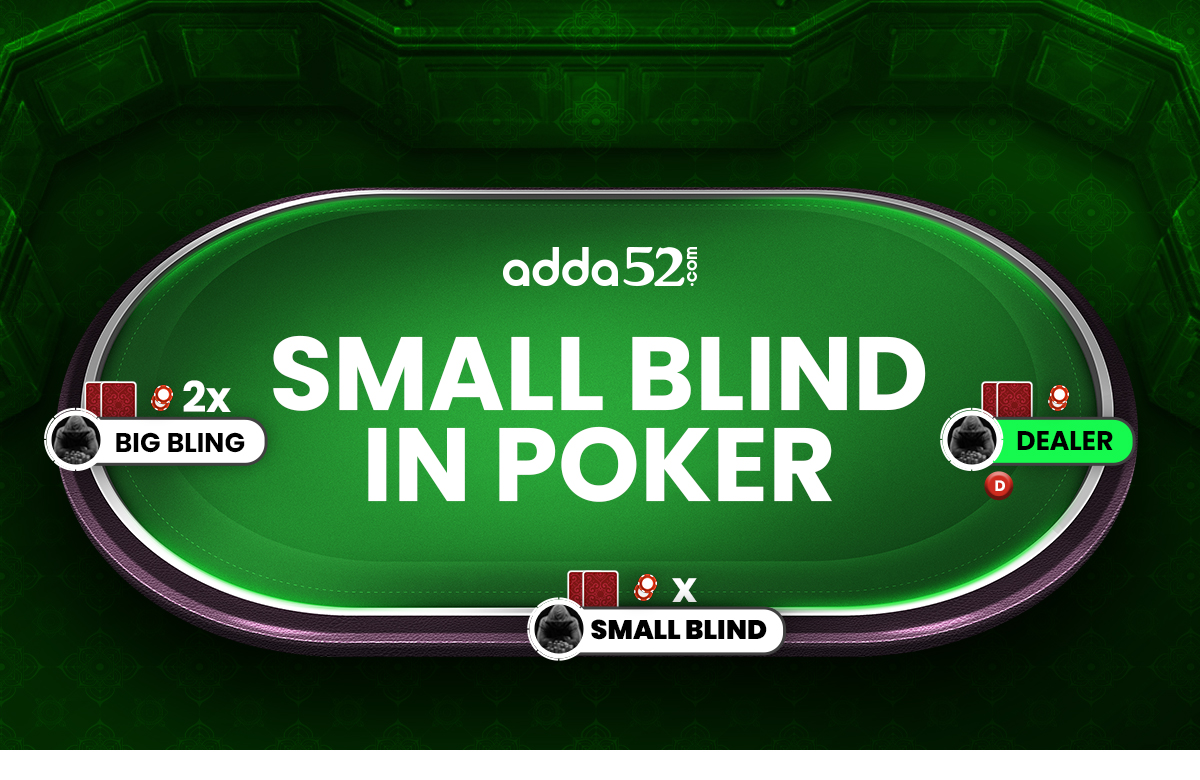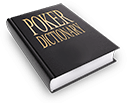Small Blind in Poker

Introduction
In the game of poker, the small blind occupies a distinct position at the table. Despite being often overlooked, it presents players with both advantages and hurdles to overcome. To determine if this position is truly unfavorable or an unexpected opportunity, let us examine its characteristics in detail.
What is Small Blind?
The small blind involves making a compulsory bet that cannot be avoided. The player seated directly left of the dealer button (who typically acts last during betting rounds) contributes this amount before cards are dealt out to all participants. It should also be noted that the small blind amounts to half of the minimum stake necessary for participation on the table.
Objective
Initiating action and maintaining a minimum pot amount are the main functions of a small blind in poker. In addition, it is succeeded by the big blind who places twice as much as the small one and takes position to its left side.
Small Blind Rules in Cash Games
In cash games, the small blind is a fixed amount that is posted by the player seated directly to the left of the dealer button.
Blind Defense
The small blind has the option to defend their blind by calling the additional amount if there is a raise from another player. They may also choose to fold or raise, depending on their hand strength and strategy.
Post-Flop Position
The small blind acts first in every post-flop betting round, putting them at a positional disadvantage throughout the hand.
Blind Stealing
Since the small blind has already invested chips in the pot, they may be more inclined to defend their blind against steal attempts from late position players.
Small Blind Rules in Tournaments
In tournaments, the rules regarding the small blind are similar to those in cash games. However, there are some additional rules due to the tournament structure
Blind Increases
In tournament play, blinds increase at regular intervals to ensure the game progresses. As the blinds increase, the small blind amount also increases proportionally.
Blind Antes
In some tournament formats, blind antes may be introduced as the tournament progresses. This means that in addition to posting the small blind, players may also be required to post an ante, which contributes to the pot.
Small Blind Rules in Heads-Up Matches
In heads-up poker, only two players are involved in the hand, and the small blind rotates between the two players after each hand. The key rules for small blind play in heads-up matches include
Blind Alternation
The player who was in the big blind in the previous hand becomes the small blind in the next hand, and the other player becomes the big blind.
Advantages of Playing at Small Blind
Often overlooked, the small blind is a position that carries with it a wealth of opportunities. All things considered, the small blind can be leveraged to gain an edge over opponents and maximize profits. Here are some of the advantages that the small blind offers in the game
Forced Action
The small blind ensures that players in this position are actively involved in the action right from the start. While this may initially seem like a disadvantage, it also means that small blind players have invested chips in the pot, giving them a vested interest in the outcome of the hand. This forced action can dissuade opponents from attempting to steal the blinds, thereby protecting the small blind player's investment.
Pot Odds
One of the major advantages of the small blind is the favorable pot odds it often provides. Since the small blind is typically half the size of the big blind, players in this position frequently find themselves getting attractive odds to call additional bets pre-flop. This means that small blind players can often see flops with a wider range of hands, especially when facing a raise from late position players. By capitalizing on these favorable pot odds, small blind players can extract value from their hands and potentially win larger pots.
Positional Awareness
Although the small blind occupies an early position, it grants players a strategic edge by enhancing their positional awareness throughout the game. As they are required to act first during each post-flop betting round, small blind players can observe and analyze their opponents' cards before making any decisions themselves. Utilizing this advantageous insight allows for better-informed choices and even potential supremacy over later acting competitors in subsequent rounds of play.
Opportunity for Aggression
Despite its positional constraints, the small blind can be a position of aggression in the right hands. Players in the small blind position can exercise their right to raise before the flop and exert influence over opponents, particularly those occupying the big blind who may be hesitant to defend with mediocre cards. By strategically implementing aggression at opportune moments, small blinds have potential to claim pots without challenge or capitalize on weaker holdings of their rivals for increased winnings.
Defending Against Steals
Apart from being an offensive weapon, the small blind plays a crucial role in preventing steals by late position players. As the small blind has already put some chips into the pot, it tends to motivate players to defend their blinds more vigorously. Using intelligent re-raises or calls against steal attempts helps small blind players discourage opponents from exploiting their situation and retain command of the pot.
Frequently Asked Questions
What's the point of small and big blind?
The small blind and big blind ensure there is action in every hand. They prevent players from folding indefinitely to wait for premium hands. Additionally, blinds contribute to building the pot, creating opportunities for players to win significant amounts.
How much is the small blind in poker?
The small blind amount varies depending on the stakes of the game. In most cases, the small blind is half the size of the minimum bet or the big blind.
Does small blind go first?
After the initial deal, during every betting round, the player in the small blind position assumes the responsibility of making an opening decision. Therefore, when it comes to post-flop rounds of betting, those occupying this position will take action first - followed by their counterparts seated at big blind and other players moving clockwise around them.
How do you deal small blind in poker?
The deck is shuffled and cut before the dealer deals cards to each player in a clockwise manner, starting from their left. To initiate action at the beginning of the hand, it is mandatory for the player located on the immediate left side of the dealer's button to post small blind prior to dealing any cards.
Conclusion
The small blind offer opportunities for skilled players to assert themselves at the table. It is a fact that this particular role comes with various shortcomings that require cautious handling. However, players who acknowledge these downsides and make calculated gameplay modifications from this position can amplify their opportunities for triumph in poker games.
